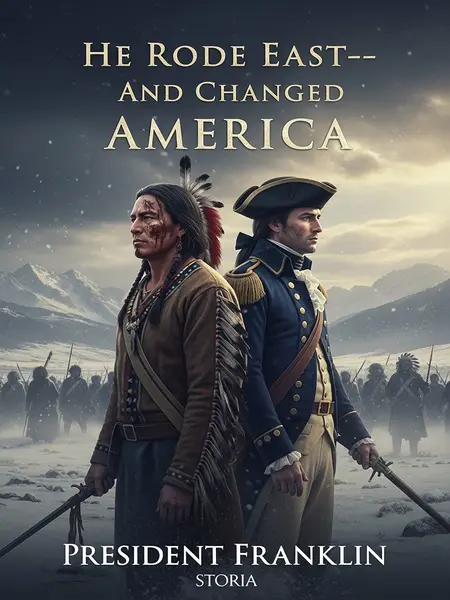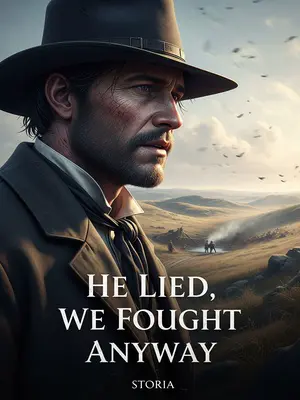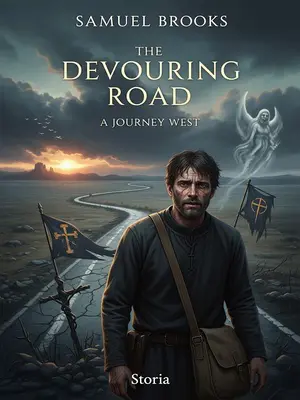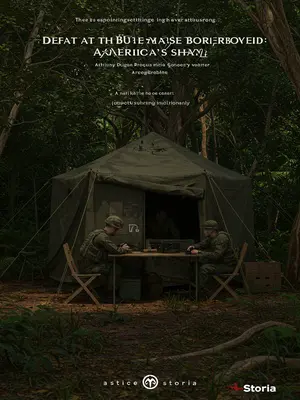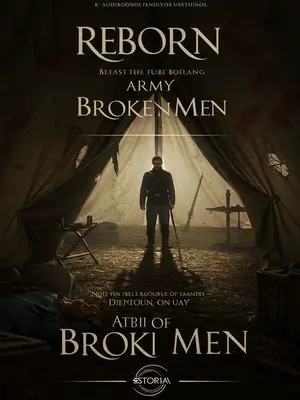Chapter 1: The West—Untamed and Unclaimed
Picture it: 791 AD. Instead of just another date in a dusty history book, imagine the wild, open American Midwest—prairie grass whispering and bending beneath the wind, bison herds thundering so hard you could feel the ground tremble. Over in Europe, the Carolingian Empire’s distant outposts were fighting for their lives, borders collapsing as mysterious enemies closed in. And here, across the ocean, the West—what would someday be the beating heart of America—stretched further and further beyond the reach of any conqueror. Untamable. Out of grasp.
You can almost see it: century after century, while kings and queens schemed in England, while the first colonists struggled to survive along the Atlantic coast, restless eyes kept drifting west. Imagine it—while royalty squabbled across the sea, while Plymouth and Jamestown dug in their roots, men and women looked to the horizon, hope and longing burning in their chests. Picture those weather-beaten scouts, lying under the stars with rifles close by, always bracing for whatever came next. Still, no matter how tough they were, not a single lost mile of that wild West was ever truly won back. That helplessness—it gnawed at a man’s pride. It was like watching something precious slip away and knowing you couldn’t stop it.
This was the crossroads—East meets West, old trade routes tangled up with new dreams. The American West, those endless plains and jagged Rockies, pulsed with promise and risk. Even the air felt charged, humming with the weight of what might be, or what could be lost.
By the late nineteenth century, the country was in a frenzy. The wounds of the Civil War were still raw, and foreign powers circled like wolves, hungry for a bite of America’s riches. Railroads snaked across the continent, but still, the West remained a wild card—untamed, unpredictable.
That’s when Governor Samuel Worthington of Dakota Territory grabbed his pen, urgency practically burning through the page. He wrote the President: “To reclaim the West is to protect the nation’s heartland; to protect the heartland is to defend the capital. If the West is lost, the Plains tribes will never settle, and not only will the borders of Kansas, Nebraska, and Colorado be threatened, but the nation itself will be at risk.” Franklin read the letter and felt the weight settle on his shoulders.
One look at a map and the West’s importance jumps out at you—plain as day. You see it, right?
Whoever owned the West held the fate of the Plains tribes, the miners, the cattle barons, the waves of immigrant wagon trains. Kansas, Nebraska, Colorado—then Wyoming, Montana, the Dakotas. Each state, each territory, owed its stability, its very soul, to the West.
It was like a massive shield, thrown up to protect the nation’s northwest. A last line of defense. Against chaos. Against invasion.
The Western frontier had to stay under federal control. Outsiders poking around? No way. That was an open invitation to disaster.
Then came 1755. After a thousand years of shifting fortunes, history cracked wide open. One last, golden chance to take back the West appeared.
This time, the leaders and soldiers of the United States promised themselves they’d answer destiny’s call. Not again would they let it slip away.
From the very beginning, the Plains tribes—Sioux, Cheyenne, Comanche—were the best horsemen the continent had ever seen. Not just legends, but the kind of riders who made even their enemies shake their heads in grudging respect. Ask any old trapper or cavalryman—they’d tell you stories that’d raise the hair on your arms.
When they thundered across the prairie, you’d hear them coming before you ever saw them—French fur traders, U.S. cavalry, it didn’t matter. Everyone who faced the Plains riders felt a mix of awe and dread. They moved like the wind and struck as deadly as a prairie fire.
By the time the Civil War finally ground to its bloody end, the great tribes had splintered. Some—Southern Plains, Northern Plains—signed treaties, even joined the United States. But the Western frontier? Still wild, still unsettled. The Mountain Confederacy, born from the Lakota and Cheyenne, was rising—a new, dangerous power blocking America’s westward dream. It felt like the old order was breaking apart. The future hung in the balance.
At the heart of the Mountain Confederacy stood the great Lakota line. And then there was Red Cloud. His ambush at Fort Phil Kearny sent an entire U.S. cavalry column fleeing for their lives. Red Cloud—he was a legend all his own.
When the old Spanish land grants faded into memory, the Confederacy didn’t just fill the void—they swept in like a storm, their camps and war parties spreading across the land, pushing out anyone who tried to stand in their way. The Plains had never seen a force so powerful or so determined.
Back in 1634, Black Elk—a Lakota chief with a gift for seeing what others couldn’t—rose to power. Four years later, he set up his capital at Wolf’s Bluff—what we now call Billings, Montana. He built the Mountain Confederacy before most Americans had even dreamed of seeing the Rockies.
From Wolf’s Bluff, the Confederacy exploded outward. They conquered the Crow and Arapaho to the south, crushed the fur trappers and mountain men in the Rockies, and cast a shadow that stretched clear to the U.S. frontier. Old-timers whispered their names with a mix of respect and fear. Nobody wanted to cross them.
How bad was it? Bad enough that President Jackson himself ordered three separate campaigns against the Confederacy’s war chief, White Bear. He knew the threat was real.
In 1716, the Confederacy delivered a blow the French would never forget at the Battle of Great Falls. Four thousand French colonial troops faced Lakota cavalry. Three thousand died. Hundreds more were taken captive. The so-called French dragoons? Routed, their banners stomped into the prairie mud. The scale was staggering—whole families wiped out, dreams shattered in a single day.
After that, the surrounding territories—Wyoming, Idaho, Utah, the Oregon Trail settlements—could only watch in awe. One by one, they recognized White Bear as the “Overlord of the Rockies.” The Confederacy was king of the mountain. No one dared challenge them.
But the Confederacy’s hunger wasn’t sated. Not even close. What next? They turned their gaze east—straight at the United States.
In 1731, the U.S. Army and the Confederacy clashed at Broken Ridge. It was a disaster—the worst defeat the Army had ever suffered. Over ten thousand of America’s best—Presidential Guard, Dakota Scouts, the pride of the nation—gone in a single, crushing blow. The shockwaves rippled all the way to the capital.
When the news reached Washington, President Adams was rocked to his core. The defeat shook him so badly, he even considered rebuilding the old frontier forts, terrified of a Confederacy invasion. Only a later victory at St. Mary’s Chapel kept the whole frontier from collapsing. If not for that, the Founders’ dream might have died right then and there. It was a close call—too close.
Finally, in 1739, a fragile peace was struck: the land east of the Rockies would belong to the United States; the west, to the Mountain Confederacy. But how long could it last?
But everyone knew it was only a pause, not a real peace. The Confederacy’s cavalry hung over the U.S. like a thundercloud—always threatening, always waiting to strike. Always there, just out of sight.
In 1735, President Franklin took office, and deep down, he made a promise: The West had to be reclaimed. The Confederacy had to fall. Broken Ridge? Never again—not if he had anything to say about it.
Maybe it was fate, maybe just dumb luck, but in 1754, a man arrived who handed Franklin the chance he’d been waiting for. Sometimes, history just lines things up for you.
In the bitter winter of 1754, the road from Washington to the President’s mountain lodge looked like a ribbon of dust and ice, slicing through the frozen landscape. Hooves pounded, breath steaming in the cold, as a party of riders tore along. At the center, commanding every eye, rode President Franklin himself—his presence impossible to ignore, even bundled against the wind.
His escort was a hundred strong, every man armed to the teeth, keeping their eyes peeled for trouble. Tension crackled in the air. Stakes didn’t get much higher than this.
